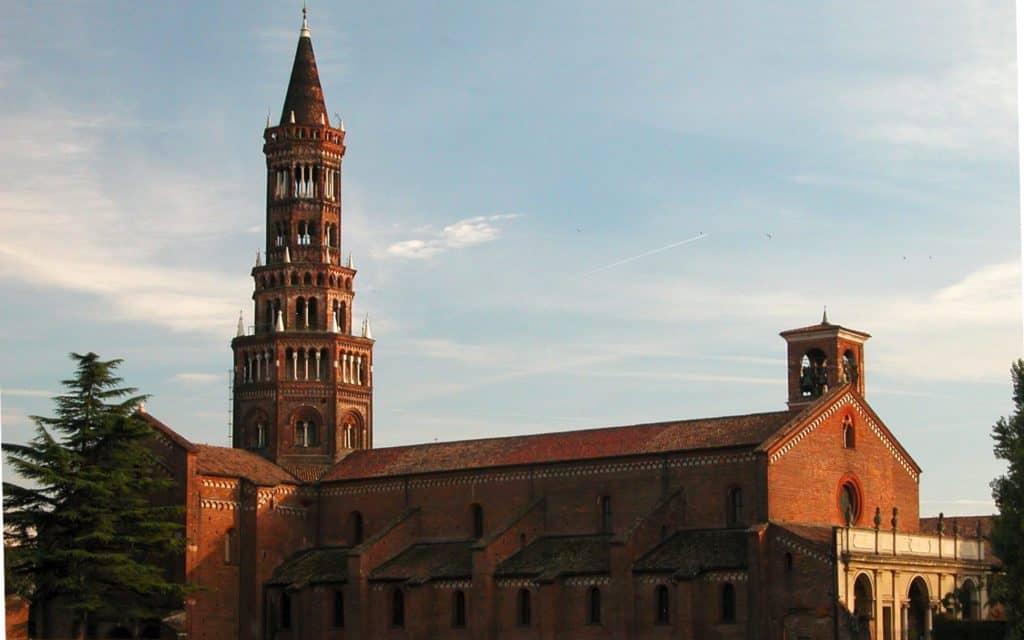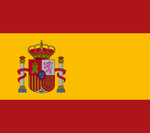Home » Itinerari » Presidi della Fede » The Abbey of Chiaravalle
The Abbey of Chiaravalle
Sommario


The old Milanese Nursery Rhyme
« Sora del campanin de Ciaravall
gh’è una ciribiciaccola
Con cinqcentcinquantacinq ciribiciaccolitt
var pusse’e la ciribiciaccola che i soo cinqcentcinquantacinq ciribiciaccolitt?
quant i cinqcentcinquantacinq ciribiciaccolitt voeren ciciarà con la ciribiciaccola
la ciribiciaccola
l’è pronta a ciciarà con i cinqcentcinquantacinq ciribiciaccolitt
la ciribiciaccola la ciciara i ciribiciaccolitt ciciaren
ma la ciciarada de la ciribiciaccola l’è pusse’e lunga de quela de i cinqcentcinquantacinq ciribiciaccolitt ».
trad.
On Chiaravalle Bell Tower
there is a ciribiciaccola
with five hundred fifty five little ciribiciaccolini.
Is it more worth the ciribiciaccola
of the five hundred fifty five ciribiciaccolini?
When the five hundred fifty five ciribiciaccolini want to chat with the ciribiciaccola
the ciribiciaccola is ready to chat with five hundred fifty five ciribiciaccolini
the ciribicciaccola chats, i ciribiciaccolini chat
but the chat of the ciribiciaccola is longer that the one of the five hundred fifty five ciribiciaccolini.
How to Reach the Abbey of Chiaravalle
The Abbey of Chiaravalle is part of a project for the enhancement of the Abbeys of the South East of Milan, Il Sentiero delle Abbazie” (The Path of the Abbeys). Starting from Porta Romana and going southward, after reaching Piazzale Corvetto to go to the Abbey you must go on to the south along Viale Enrico Martini and, as you meet the roundabout of Piazzale Gabrio Rosa, take the first exit towards Viale Omero, then enter Via San Dionigi, after slightly bending towards the southeast, to arrive in Via Sant’Arialdo, in the village named in ancient times “Roveniano” or sometimes “Rovegniano”.
A Short History
The Abbey of Chiaravalle (in latin, Sanctæ Mariæ Clarævallis Mediolanensis), also known as Santa Maria di Roveniano, is a Cistercian monastic site, located in Parco Agricolo Sud Milano, between the boroughs Vigentino and Rogoredo, founded in the 12th century by St. Bernardo di Chiaravalle as a filiation of the Abbey of Clairvaux. Bernardo, a man of great culture and strong religiosity, came from France to these territories for founding a place of worship, as he had already made in his homeland, in Clairvaux. In January 1135, on a originally marshy and uncultivated area, he started the edification of the Abbey of Chiaravalle. An agricultural village developed around it , the “Borgo Chiaravalle”, which was annexed to the Municipality of Milan in 1923.
According to tradition, the grana cheese of the Po Valley, Grana Padano, was born in 1135 in the Abbey of Chiaravalle; the identification of this Abbey as the birthplace of the progenitor of the Grana Padano, however, is not certain: as a matter of fact, there was in the same Valley another homonym abbey, located between Piacenza and Fidenza.
In the official site of the Abbey it is given for certain that the origin of Grana Padano really was in the Abbey of Chiaravalle and a special section narrates that “a millenary story unites the Abbey of Chiaravalle and the Grana Padano DOP”.
Tradition narrates that inside the ancient walls of the Abbey of Chiaravalle, around the year one thousand, the Cistercian monks fine-tuned the receipt of Grana Padano, as a way of preserving the milk surplus.
As a matter of fact, with the reclamation work of the Cistercian monks and the consequent diffusion of cattle breeding, it became a priority to find a solution not to waste the rich availability of fresh milk, a crucial food of the medieval diet. The monks therefore found an effective method of conservation: to cook milk into special heater, adding some rennet to it and subjecting it to salting and maturing. A hard cheese, with a sweet and savoury taste was born, which kept all the nutrients of milk unchanged. Its first name, “caseus vetus”, in Latin “old or aged cheese”, in order to distinguish it from the soft cheese, was soon substituted by people with the term “grana”, considering the peculiarity of its grainy look.
The fame of Grana Padano soon spread among the renaissance courts as a valuable ingredient of the elaborated noble cooking, but also in the countryside, as the main food during times of famine. Appreciated at all social levels, Grana Padano thus became the expression of a social and economic culture of the territory of the Po Valley.
We suggest you to visit the official site of Abbazia di Chiaravalle for rich insights in history, art and events,
We suggest also to visit our Photo Gallery
A View around the Abbey
The Mill
The Mill of Chiaravalle, located on two levels with wide rooms and vegetable garden, is owned by the Cistercian monks since 1798, when it was sold. The Cistercian came back to Chiaravalle in 1952, after having been for more than a half year away and only in 1977 the monastic community reacquired the Mill and the annexed marsh. It is believed that it was built at the same time of the building of the abbey, even if the first documents that talks about it dates back to 1238, focusing only on its central body and the two wheels. The Mill was in a very bad condition and was risking to collapse, due both to the unsafe roof and the collapse of the load-bearing walls. The monastic community took care of the renovation, asking for funds. The restoration started in 2000 and lasted 9 years, until 2009. Now the Mill has been completely rebuilt and its management was given to the cooperative Koinè, which is at your disposal for guided tours, meetings with groups or schools, didactic labs end further events.











